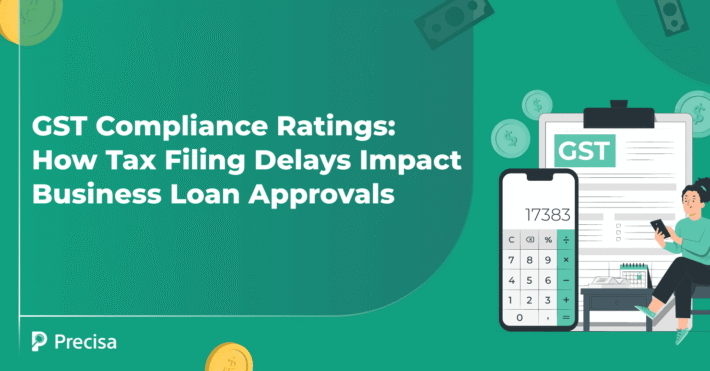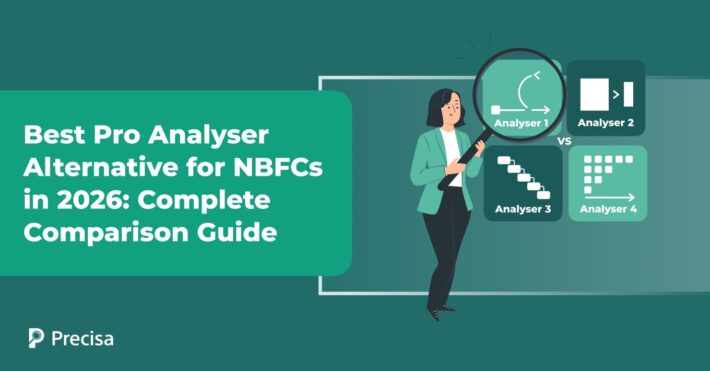Fixed Obligation to Income Ratio Explained: Why Keeping FOIR Below 55% Is Crucial

Fixed Obligation to Income Ratio (FOIR) shows how much of your monthly income is already locked into fixed payments. This includes EMI payments, rent, and insurance premiums.
When you apply for a loan, lenders assess your FOIR ratio to see if you can handle more debt. Most lenders in India favour your FOIR to stay between 40% and 50%. Once it crosses 55%, your chances of approval drop sharply.
Modern bank statement analysis tools now calculate FOIR automatically, helping lenders assess eligibility in seconds.
This article explains why keeping FOIR below 55% is essential from the DSAs and NBFC perspectives.
What Is FOIR, And How Does It Differ From Other Metrics?
FOIR is the proportion of your fixed monthly obligations to your gross monthly income.
It is similar to the debt-to-income ratio but with one key difference. FOIR does not count statutory deductions like tax or provident fund. It looks only at your fixed obligations.
Banks assess FOIR to see how much disposable income you have left for new loans. A higher FOIR means your repayment capacity is limited. It also tells the bank that you carry more risk.
That’s why keeping your FOIR under control makes it easier for you to get credit when you need it.
Why FOIR matters:
- Risk assessment: FOIR allows lenders to gauge how much financial burden an applicant already carries. A lower ratio implies more disposable income and greater ability to repay a new loan.
- Loan eligibility: Most banks consider a FOIR below 50% to be safe. A high ratio can lead to rejection or lower sanctioned amounts.
- Avoiding defaults: By assessing FOIR, lenders minimise the probability of borrowers over-leveraging and defaulting.
- Loan amount determination: FOIR influences the amount and tenure a bank is willing to offer.
How To Calculate FOIR
Calculating the FOIR ratio helps to analyse your cash flow. The formula for calculating FOIR is:
FOIR= (Total Monthly Obligations ÷ Gross Monthly Income)×100
- Fixed obligations: Include EMIs for loans, credit card minimum payments, rent, and insurance premiums. Exclude statutory deductions like PF and taxes.
- Gross monthly income: Your income before taxes.
Example:
You earn ₹80,000 per month. Your EMIs, rent, and premiums total ₹40,000.
FOIR = (40,000 ÷ 80,000) × 100 = 50%
This shows half your income is tied up.
Modern lending platforms, like Precisa, automatically calculate FOIR by scanning and categorising transactions in bank statements. This ensures all fixed obligations are captured accurately, eliminating manual errors.
Automated FOIR tracking also allows lenders to monitor changes over time, flag high-risk profiles, and make faster, more informed loan decisions.
Why Your FOIR Should Stay Below 55%
Most Indian lenders treat 55% FOIR as an upper limit. A lower FOIR means more disposable income and thus better eligibility for loans.
Studies show that lenders typically keep FOIR thresholds between 50% and 55% for salaried applicants earning above ₹50,000 per month.
Non-bank financial companies may go up to 60%, but even they prefer borrowers below 55%
With Precisa, FOIR analysis is enhanced by the volatility score, which measures fluctuations in a borrower’s income and outgoing payments. Higher volatility can increase perceived risk, even if FOIR is within limits. By correlating FOIR with volatility, lenders get a clearer picture of repayment capacity and financial stability.
Additionally, automated FOIR tracking in lending workflows ensures that all fixed obligations are monitored in real time.
Why is the 55% Fixed Obligation to Income Ratio Important?

- At or below 50% FOIR: Your debt and income are balanced. Lenders trust your repayment ability. You fall in the safe band and usually get loans at good interest rates.
- Above 50% FOIR: Lenders start to worry. They see you as carrying too many fixed payments. You may get a smaller loan, be asked to add a co-applicant, or face stricter conditions.
- At or above 55% FOIR: You are seen as high risk. Banks assess your profile more closely and may charge higher interest. Your chances of loan approval go down.
- At 70% FOIR or more: Getting a loan becomes almost impossible. Lenders consider you too risky.
What Are The Consequences Of a High FOIR
A high FOIR doesn’t just affect loan approval. It can create long-term problems for your finances:
Loan Rejection or Smaller Approval
If more than half of a borrower’s income is already tied to fixed payments, lenders see them as overburdened. Applications may be rejected or sanctioned for a much smaller amount. With tools like Precisa, hidden EMIs, informal loans, or undeclared obligations can be detected through automated bank statement analysis, preventing risky approvals.
Costlier Loans
Some NBFCs may still approve high-FOIR applicants, but they often charge higher interest or extend the tenure to compensate for the risk. Risk scoring helps lenders identify such profiles early and adjust terms based on accurate repayment capacity.
Credit Score Damage
When FOIR is high, borrowers are more likely to miss payments or default. This lowers their credit score and reduces future eligibility. Precisa’s cash-flow analysis and repayment pattern analysis help lenders catch early stress signals before they turn into defaults.
Less Financial Freedom
If most of a borrower’s income is locked into fixed obligations, there’s little left for emergencies or savings. This limits flexibility and increases stress. With transaction categorisation and expense tracking, Precisa provides lenders with a full picture of recurring commitments to prevent over-leveraging.
Strategies to Improve the Fixed Obligation to Income Ratio
Financial institutions and experts offer several strategies to keep FOIR under control:
- Pay off small debts first: Clearing smaller loans reduces monthly obligations and boosts your FOIR. Automated analysis tools can also verify whether these repayments actually reflect in the customer’s bank statements, preventing false declarations.
- Increase your income: Take on freelance projects, negotiate a raise, or start a side business to improve the denominator in the FOIR formula.
- Consolidate debts: Combine multiple loans into one with a lower interest rate and longer tenure to reduce EMIs. With automated bank statement analysis, lenders can quickly verify whether consolidation has genuinely reduced the applicant’s total fixed obligations.
- Choose longer tenure for new loans: Extending repayment duration lowers EMIs, which can bring FOIR below 55%.
- Apply with a co-applicant: Add a co-applicant (spouse or parent) to share the EMI load. This increases combined income and lowers FOIR.
- Maintain a good credit utilisation ratio: Keeping credit card use below 30% of the available limit shows disciplined financial behaviour.
- Avoid multiple loans: Excessive borrowing signals poor money management and can push FOIR into the danger zone.
In addition to these strategies, automated transaction categorisation helps lenders spot every recurring obligation. It helps you track everything from EMIs and credit card dues to insurance premiums and rent, eliminating the risk of missed liabilities during assessment.
Final Thoughts
Fixed Obligation to Income Ratio is more than a number. It is a metric that explains your financial health. Keeping it below 55% shows lenders that you can manage debt responsibly and still have room for new obligations.
For DSAs and NBFCs, keeping FOIR in check means fewer defaults and smarter lending decisions. With an advanced NBFC software like Precisa, you can easily track borrowers’ FOIR, identify high-risk applications, and offer personalised loan solutions.
Ready to automate FOIR analysis and reduce loan processing time? Get in touch with us today and see how Precisa helps you assess FOIR in seconds.



